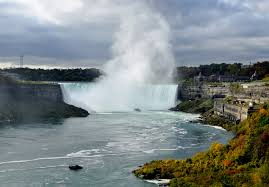Discovering the Wonders of Niagara Falls

Introduction
Niagara Falls, one of the most iconic natural landmarks in the world, straddles the border between Canada and the United States. Known for its breathtaking beauty and immense power, the falls attract millions of visitors each year. As a significant site for tourism, ecology, and energy generation, Niagara Falls continues to hold a critical place in both natural history and economic relevance.
Overview of Niagara Falls
Comprising three waterfalls – the American Falls, Bridal Veil Falls, and the larger Horseshoe Falls – Niagara Falls is renowned for its spectacular cascades and misty atmosphere. The falls were formed approximately 12,000 years ago during the last Ice Age, making them a crucial element in the geological history of North America. The volume of water pouring over the falls can reach up to 168,000 cubic meters per minute, making it one of the most powerful waterfalls globally.
Impact on Tourism
According to recent statistics, Niagara Falls welcomed nearly 12 million tourists in 2022, reaffirming its status as a prime destination for travellers seeking adventure and natural beauty. The region boasts a plethora of attractions including the Maid of the Mist boat tour, which offers close-up views of the falls, and the Cave of the Winds, where visitors can walk along wooden platforms just feet away from the rushing water. Tourism is a key economic driver for the surrounding areas, with billions of dollars generated annually through hospitality, dining, and entertainment.
Environmental Significance
Beyond its tourism appeal, Niagara Falls plays a vital role in the regional ecosystem. The waters that flow over the falls continue to support a diverse range of flora and fauna, including several unique species that thrive in the misty environment. Efforts are underway to maintain the natural beauty of the falls while balancing the needs of energy production. The Niagara Hydroelectric Project generates a significant amount of power for both the United States and Canada, illustrating the dual importance of the falls for nature and energy generation.
Conclusion
Niagara Falls remains not only a magnificent natural wonder but also an essential economic and ecological resource. As we move forward, the challenge lies in preserving its beauty while ensuring sustainable tourism and energy practices. For many, a visit to Niagara Falls is a lifelong dream, and the impressive sight of millions of gallons of water crashing down creates lasting memories. Ensuring its protection and appreciation is vital for future generations to experience the awe of this remarkable site.









